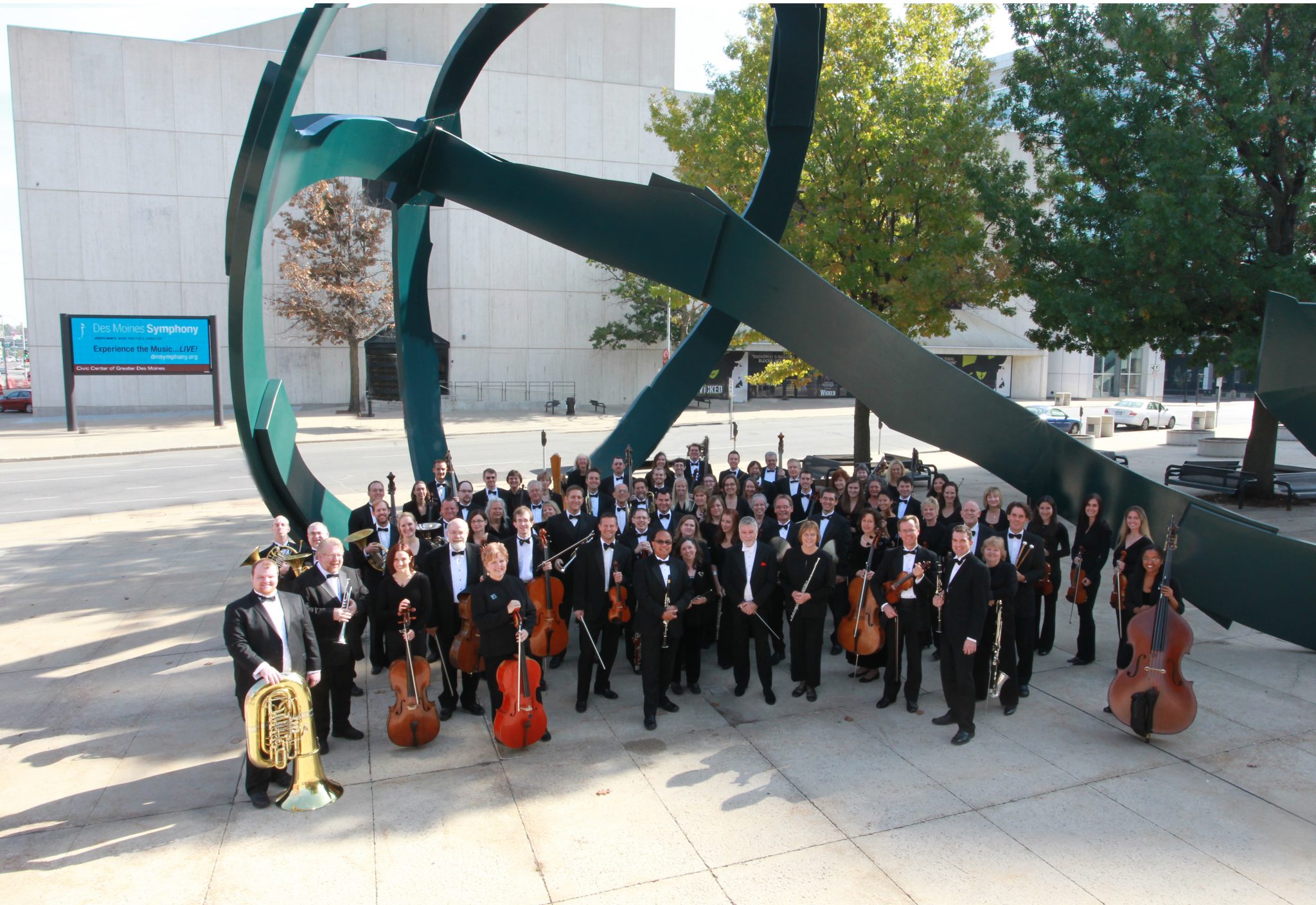It is a testament not only to the rich legacy of the 77 season history of the Des Moines Symphony but also to the faithful patrons in the region that on the first big snowfall of this Iowa winter, the 2,662-seat Des Moines Civic Center was nearly packed. The audience composed of diverse age groups all turned out for the perennial wonder that is Beethoven Symphony No. 5 in C Minor as well as a new edition to the performance, Beyond the Score. It was an evening devoted to committed musicianship and discovering a favorite masterwork with new ears.

Beyond the Score
Beyond the Score is a fascinating multimedia exploration featuring four actors, pianist Eugene Gaub, Maestro Joseph Giunta, and the Des Moines Symphony all working together to encourage a richer listening experience for all in attendance – not just the unpracticed concert-goer. The visual, aural, and dramatic production is a clever way to introduce the themes and elements of the symphony. Originally created by the Chicago Symphony in 2005, it is the closest I’ve ever witnessed to a “Pop Up Video” for the classical music set. The actors touched on moments in Beethoven’s life leading up to and during the writing of his fifth symphony including his admiration and esteem for Napoleon Bonaparte. Roger Mueller‘s lightly accented text leant gravitas to his Beethoven admitting, “how can I admit inferiority in the one sense that should have been more perfect in me? I heard nothing.” A few interesting pronunciations aside, Michael Boudewyns, Sara Valentine, and Stephen Yoakam were excellent guides through the history of the composer. Boudewyns as critic E.T.A. Hoffman and Yoakam’s French Military Officer were energizing and gave a sense of authenticity to the text.
Symphony No. 5 in C Minor
The Beyond the Score program with its musical extracts, theatrical narrative, and hand-paced projections stoked the audience’s anticipation for the full performance. This was not an oppressively solemn hand of fate from the Des Moines Symphony. The first movement Allegro con brio did indeed move with brilliance and the bright and brassy horn sounds were vivid throughout. Jennifer Wohlenhaus‘ treatment of the short oboe cadenza in the first movement was a sterling delivery of the unexpected phrase.
Likewise, Gregory Oakes‘ second movement messa di voce clarinet work grew out from the texture of the strings to provide a touchstone for the ear. The woodwinds exhibited accomplished and deft ensemble playing. It was gratifying to hear the orchestra under the baton of Giunta emphasize when Beethoven leads the listener’s ear in an interesting and evocative way. With their performance, one can hear how this work influenced Brahms so deeply. While there were a few debatable tuning moments in the cello/bass Scherzo theme, both elements of the “singing piano,” legato dotted rhythms in the Andante con moto of Saturday night’s performance were impressive.
When the Symphony reaches the finale there is an exuberance without hint of labor or weight. One could sense a collective smile break out across the audience. It is too often that we hear an almost out of control Allegro finale and the sense of mastery is hidden in favor of immense sound. Giunta made an expert choice to let the musicians shine rather than pummel through the finale. Instead of oppressive, the continued emphasis of the cadential chords was therefore uplifting.
While the “fate theme” is conceivably the most famous beginning of all classical music, the Des Moines Symphony took care which each successive moment of the popular work. This is not an example of a regional symphony programming stalwarts to achieve ever elusive attendees but a commitment to the musical literacy of their community and their own musical mastery. It was encouraging to witness the Des Moines Symphony actively employing thoughtful and engaging audience development tools in addition to their impressive musical performance.
